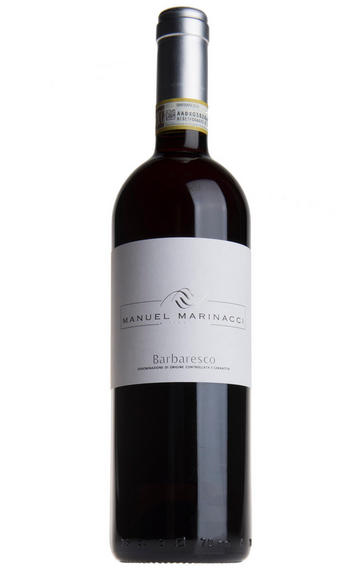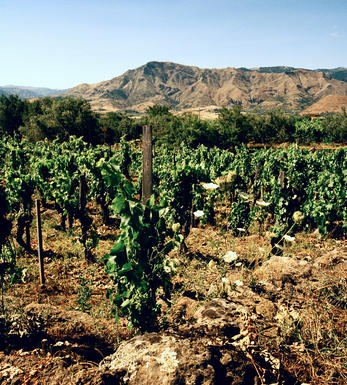
About this WINE

Manuel Marinacci, Piedmont
Manuel Marinacci’s artisanal cantina is hidden in the village of San Rocco Seno d’Elvio. The estate covers only four hectares, lying within the Rocche Massalupo vineyard on the western edge of the region. Since he began in 2004 and until the ’17 vintage, Manuel never referenced the vineyard on his label; today, with growing interest in these local identifiers, it now features.
The vineyard itself is of friable marl, with layered clay and limestone, but less sandstone than other sites. Manuel’s slopes are steep and south-facing but near the foot of the hill, always well ventilated by the breeze that scuds along the nearby stream. Winemaking is simple and unfussy: fermentation in cement or fibre glass, and two years’ ageing in large Slavonian botte. Manuel does like to give his wines an extra year in botte, so these are usually Riserva in stature, although not always declared as such. Only about 500 cases of Barbaresco are made each year.

Barbaresco
The Piedmontese DOCG zone of Barbaresco is responsible for producing some of Italy’s finest wines. It occupies the same region and uses the same grape (Nebbiolo) as its bigger brother Barolo, but is a third of the size (only 640 hectares versus Barolo’s 1,700 hectares). It is also 50 years younger than Barolo, having produced wine labelled Barbaresco since 1890.
Barbaresco earned its DOCG after Barolo in 1980, largely thanks to the efforts of Angelo Gaja. The soils are lighter here than in Barolo – both in colour and weight – and more calcareous. The slopes are also less favourably situated and (relatively speaking) yield earlier-maturing yet extremely elegant wines that require less oak ageing (normally one year in oak plus six months in bottle). The appellation’s key districts are Barbaresco, Treiso, Neive and Alba.
Recommended producers: Cigliuti, Gaja, Marchesi di Gresy

Nebbiolo
Nebbiolo is the grape behind the Barolo and Barbaresco wines and is hardly ever seen outside the confines of Piedmont. It takes its name from "nebbia" which is Italian for fog, a frequent phenomenon in the region.
A notoriously pernickety grape, it requires sheltered south-facing sites and performs best on the well-drained calcareous marls to the north and south of Alba in the DOCG zones of Barbaresco and Barolo.
Langhe Nebbiolo is effectively the ‘second wine’ of Piedmont’s great Barolo & Barbarescos. This DOC is the only way Langhe producers can declassify their Barolo or Barbaresco fruit or wines to make an early-drinking style. Unlike Nebbiolo d’Alba, Langhe Nebbiolo can be cut with 15% other red indigenous varieties, such as Barbera or Dolcetto.
Nebbiolo flowers early and ripens late, so a long hang time, producing high levels of sugar, acidity and tannins; the challenge being to harvest the fruit with these three elements ripe and in balance. The best Barolos and Barbarescos are perfumed with aromas of tar, rose, mint, chocolate, liquorice and truffles. They age brilliantly and the very best need ten years to show at their best.



Buying options
Add to wishlist
Description
Typical of the vintage with its bright-red, brambly colour, Manuel employed his cement cuves and large Slavonian oak botti to great effect in 2011, producing an unclarified, unfiltered, essential Barbaresco. This is coolly poised with cleansing redcurrant and cherry fruit, notes of tight red berries and thickish skins that were gently macerated over 22 days to extract their goodness. This is juicy, pert, crunchy; a lesson in simplicity.
Unlike many of his fortunate neighbours, Manuel Marinacci started with nothing, not even a vine. However, having studied at Alba’s fine Umberto 1 Oenological School during the 1990s, followed by a stint abroad, Manuel felt his vocation to be that of a winemaker. Seeking out a distant relation with a few hectares of vines to rent in an unfashionable part of Barbaresco, San Rocco Seno d’Elvio, he began his story in 2002 — the year when the heavens opened. Undimmed, he has continued to farm the land and vinify the wine alone, helped only by his faithful hand Tino. Now with seven vintages under his belt, the reputation of his traditional and true Barbaresco is growing.
wine at a glance
Delivery and quality guarantee